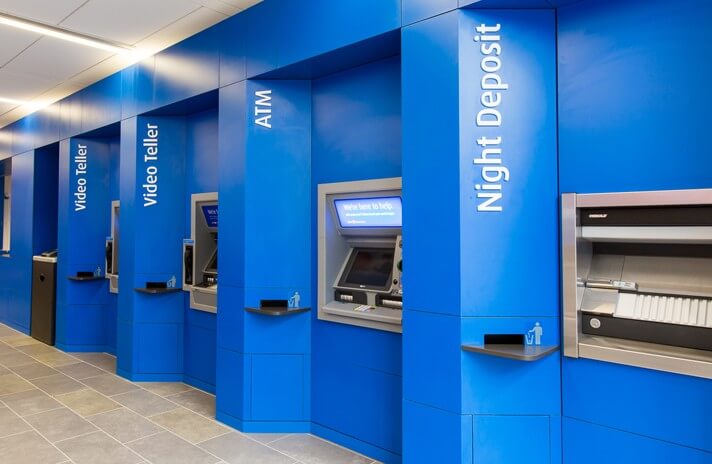How IoT is Changing Financial Services and Banking
The banking industry is known to be slow, conservative, and prone to bureaucracy. For these reasons, the sector can be relatively slow in implementing tech innovations. While retail, automotive, and manufacturing sectors have paved the way for IoT advancements, the banking industry is still slowly catching up. Fintech startups and newcomer banks are the first to implement the opportunities provided by the Internet of Things.
Are these innovations worthwhile? What are some Internet of Things banking applications? Does the future lie in IoT-empowered banking? This post will provide an in-depth rundown of IoT uses in the banking industry.
According to MarketsandMarkets, the market size of IoT in the financial and banking industries is expected to reach over 2 billion USD by 2023. Banks and financial service providers are expected to actively leverage the potential of this technology. Prime Indexes forecasted that 60% of financial organizations are planning to make wearables the commonplace payment methods.
The Internet of Things can, without a doubt, propel the financial industry to the next level. While most IoT adoption scenarios in banking seem overly ambitious and far-fetched, the growing number of IoT development solutions in this field proves that connected banking is within reach. Here are the most promising examples of IoT in banking waiting for us just around the corner.
1. Wealth management personalization
Using data processing algorithms to produce wealth management insights is a common practice. The Internet of Things in financial services will only increase the accuracy and speed of information gathering, as well as broaden the range of available insights.
Thanks to the Internet of Things, business managers will get real-time financial data that facilitates and improves the quality of the decision-making process.
IoT-enabled wealth management solutions will also alert users in case their financial stability is under threat.
2. Improved payment security
IoT in financial services will empower new forms and tools for payment – including smart cards, biometrical tokens, and more. ATM-based transactions as we know them are likely to disappear in favor of devices that can use smart card technology. IoT will empower wearable payment systems. Instead of having to carry credit cards that can be easily lost or stolen, you will be able to pay using a wristband.
A few years ago, Barclays have already released wearables for contactless payments. A PingIt program (former bPay) allows users to send and receive payments using wearables, check their balance, credit history, and so on.
3. Transaction automation
Such an application of IoT in banking allows each payment transaction to be technologically controlled. The technology will eventually enable the ‘Internet of Value’ — a secure and monitored international trading environment where all payments are controlled via a system of smart sensors and connected apps. Here, IoT will be a crucial safety regulator.
Read: IoT application design [key tips to design effective IoT experiences]
4. Improved transparency
The future of IoT in banking means loan providers will get detailed data on customers: credit debt and history, asset details and value, as well as the yield of commodities a client produces (crucial for agricultural companies relying on banks for loan services). As a result, financial organizations will have an improved decision-making system for granting credits.
IoT-induced transparency will offer banks some insurance as it reduces the risk of dealing with unreliable debtors in the future. The data, provided by IoT, will, among other things, offer banks flexibility they usually struggle to provide.
Loan providers will be able to customize the conditions based on customer behavioristics, objectives, and credit histories.
Banks will also be able to estimate the value of commodities a debtor possesses with precision, which is impossible to achieve as of now.
5. Optimized capacity management
One of the ways to leverage the power of the Internet of Things is by optimizing capacity management at bank branches. By gathering, processing, and sharing customer data in real time, branch managers will be capable of tracking the number of customers visiting a bank per day, how much personnel is needed to achieve peak efficiency, and what are the ways to optimize the counters. IoT will allow managers to predict the amount of cash that needs to be directed to cash dispensing machines at each location.
6. Voice assistants
IoT will help banks embrace voice-driven communications. Back in 2016, Capital One introduced a unique skill for Amazon’s Alexa that allowed bank clients to process sensitive financial data using a voice assistant. This way, the clients could access their financial accounts in real time and check the credit card balance as well as the status of current loans. Here are the types of questions users would be able to ask a voice-assistant:
- How much did I spend during a selected period of time?
- How much do I have on my bank wallet?
- When do I have to pay my bills?
- How much is my next payment?
Similar integrations were developed for Google Home as well. In the future, it’s expected that Capital One will not be the only institution to create connected systems that are integrated with voice assistants.

Many fintech companies that are eager to get started with IoT implementation hold back as they are not sure the investment is worthwhile. While the applications of the Internet of Things in the banking industry for a few other industries are laid out in the open, the financial sector still needs to figure out the appropriate use for such a powerful technology.
The good news is, implementing IoT in banking has certain universal benefits regardless of the scale or location of a business that is launching a connected project. Here are the most promising ones:
Improves users’ financial habits
Connected devices can help users cultivate positive financial habits and deal with spending indulgence. Interact IoT, the first IoT bank, started using shock wearables as a part of an educational program for its users. After a user has set a credit card limit, a wearable will track their spending throughout the day. As you approach the limit, you’ll be alerted. In case a user ignores a notification, a wearable will send a shockwave to their wrist as a reminder to not spend anymore.
Raises the quality of the banking experience
The Internet of Things affects banking customer services by providing clients with timely insights and personalized experience. Thanks to connectivity, a visitor would be able to schedule an appointment and check it with a smartphone. This way, a customer will know when it’s their turn at the counter and will not have to wait in a line.
On the other end, a service provider will be able to store the client’s visiting history, know the list of services they use as well as frequently asked questions. Citibank, for one, has already enabled a Bluetooth-empowered system with IoT beacons that allows users to access ATMs 24/7.
Expanding the range of services outside banking
The Internet of Things allows banking organizations to become more consumer-centric expanding the range of services beyond the traditional ones. U.S Bank, for instance, has started the IoT initiative that motivates its clients to stay fit. For completing achievements, users will get bonuses and financial rewards.
Increases the efficiency of branch banking
Mobile banking puts the modern-day branch system in jeopardy. To ensure a traditional approach still brings value, financial service providers turn to the Internet of Things and banking applications. Biometric sensors will gather user data as soon as he enters the bank and alert the main system.
Smart branches will allow bank managers to cut the number of employees and maintenance costs, reduce client waiting time, and create a connected communication system between branches in different locations.
Such a branch was already tested by a BMO Harris Bank where no human employees are present. A user is mainly guided by connected technology and chatbots — in the case of unpredictable questions, they are able to contact a human consultant via video conference tools.

Better credit card experience
The Internet of Things also enables interactive credit card development. Instead of a piece of plastic, a bank client interacts with a digital display that allows them to ask the bank a question in real time, tweak credit card limit settings at the shopping site, and so on. For service providers, interactive credit cards will result in marketing customization and the increase of client support speed. While smart credit cards are yet to become commonplace, such a project has already been announced at Mobile World Conference 2018.
Upgraded ATMs
Modern-day ATMs can at times seem old fashioned and frustrating. The Internet of Things can transform this experience by connecting ATMs to bank branches as well as making them fully manageable via a smartphone. With motion sensors, a user will be able to find the closest ATM to their current location. In case a machine is broken, a connected model will transmit it in real time. This way, a service provider will be able to contact an engineer as soon as possible and reduce machine downtime.
Automated business processes
IoT systems can take care of request handling, automatically disable credit cards in case of payment delay, transfer asset ownership, and so on. The Internet of Things as a means of automation will enable instant loan processing and collateral monitoring.
Learn more about IoT design and development services.
Conclusion
The Internet of Things and banking industry offers a range of new opportunities in customer management, business process automation, new forms of payments, and much more. Fintech startups and banks who are willing to take the risk and push the envelope in IoT adoption will most likely be tomorrow’s industry leaders.
If you want to join the initiative of IoT innovations in finance, contact Digiteum. Our team helps companies implement digital transformation and build tech solutions. We develop IoT and big data software to help SMEs and global corporations streamline business processes, improve customer service, and create innovative products and strategies. Take a look at a full range of our IoT projects on the portfolio page. If you’re looking forward to building your own IoT project, contact our team. Our team of skilled software engineers, designers, analysts and data scientists will be happy to join your project.




